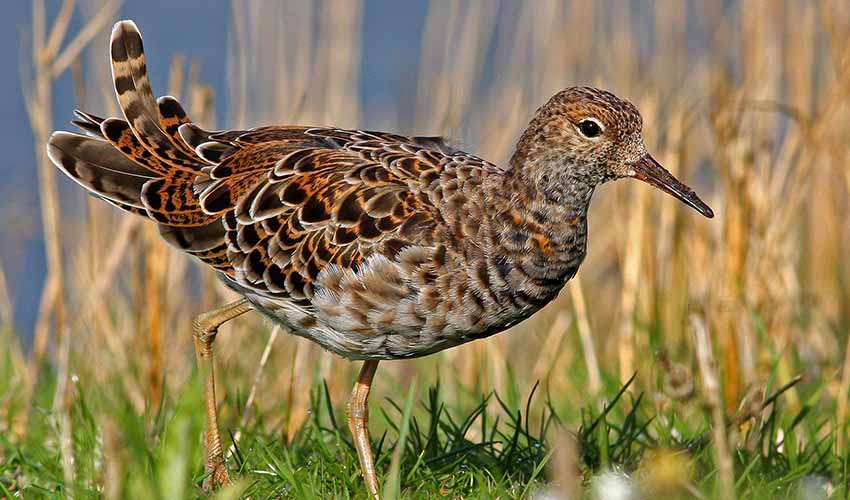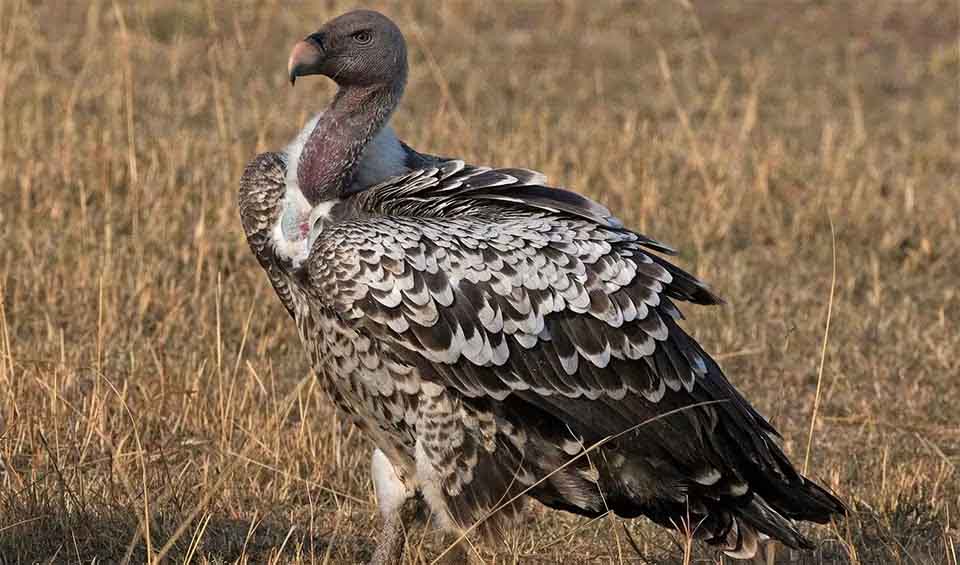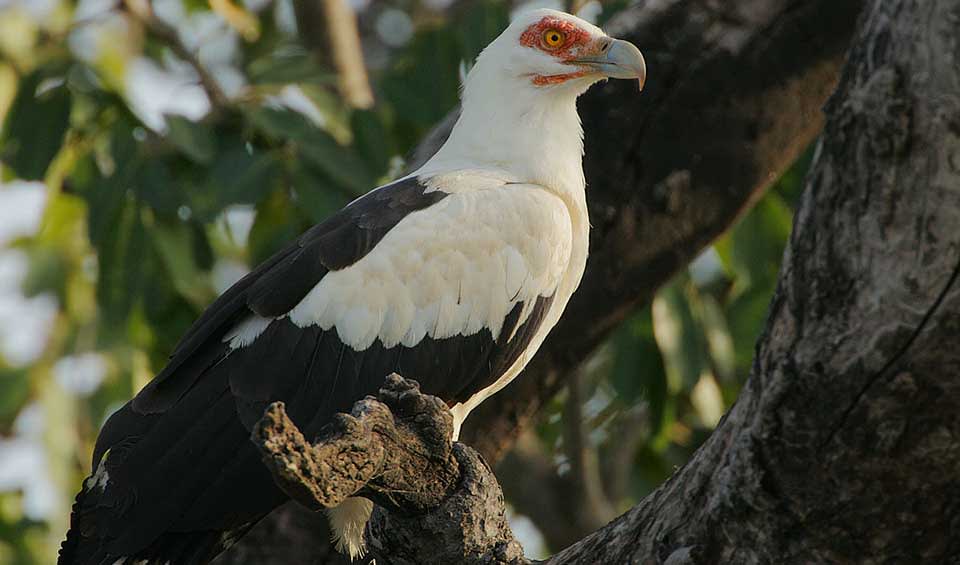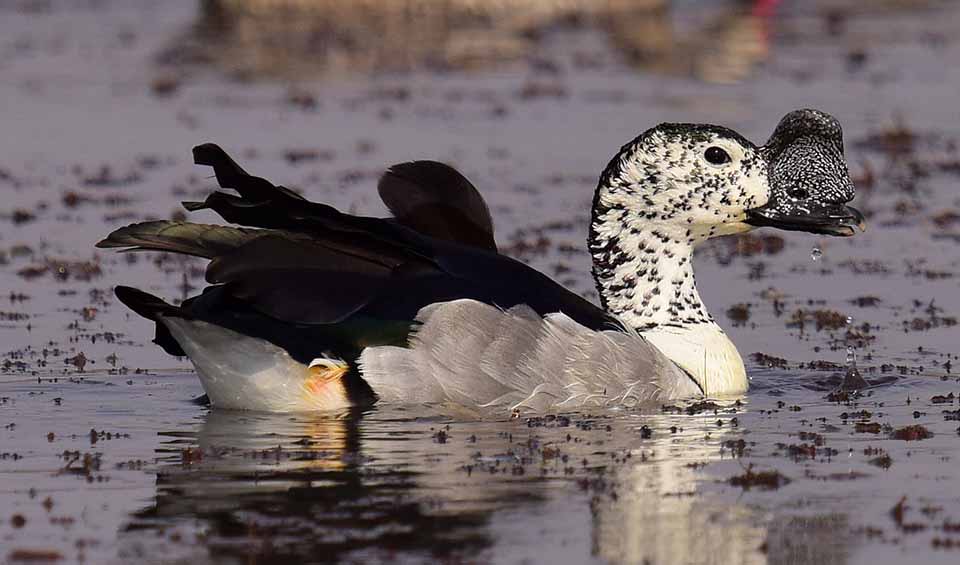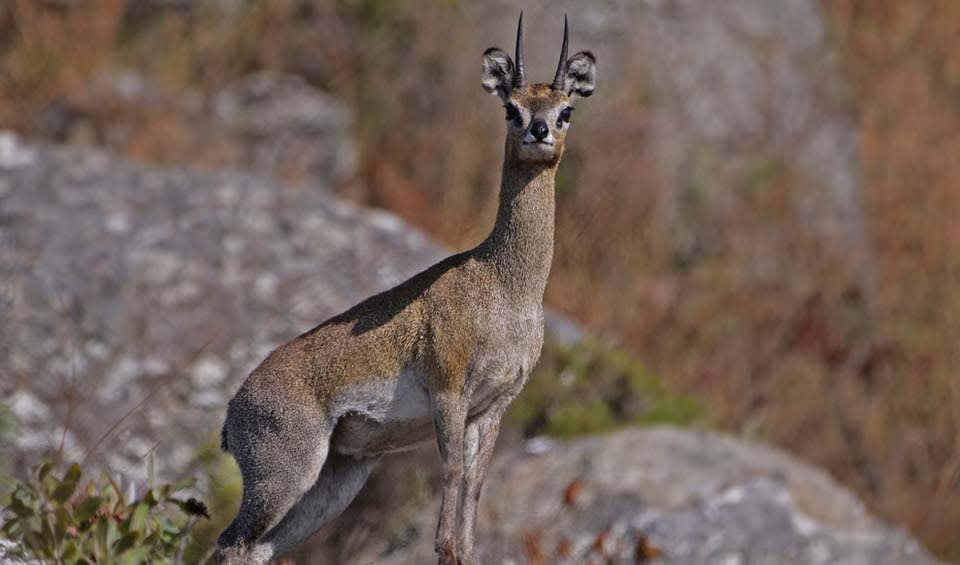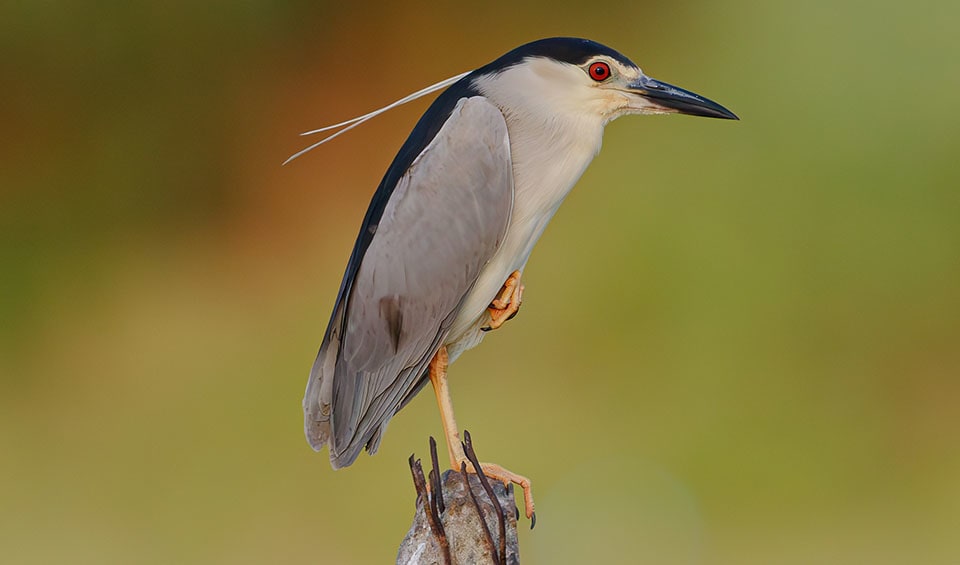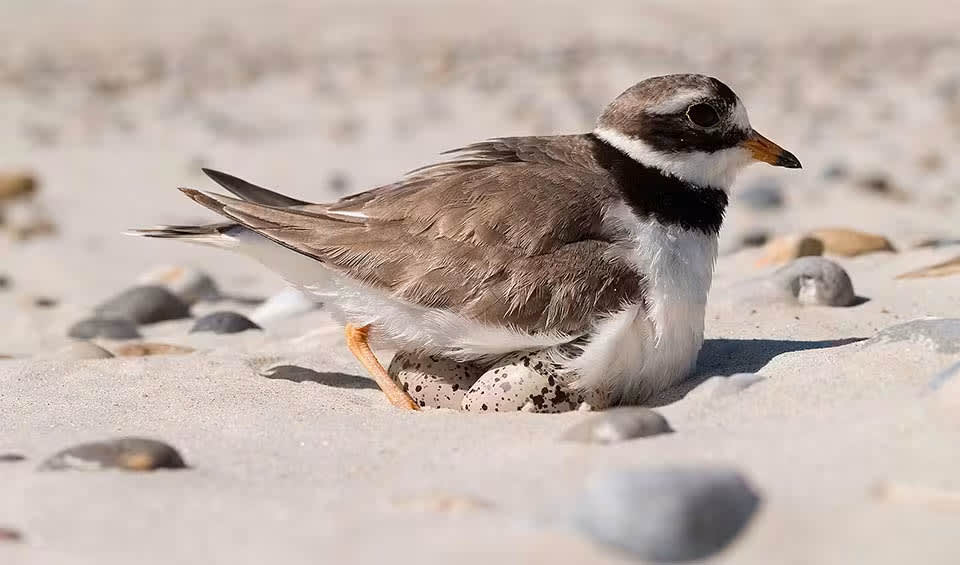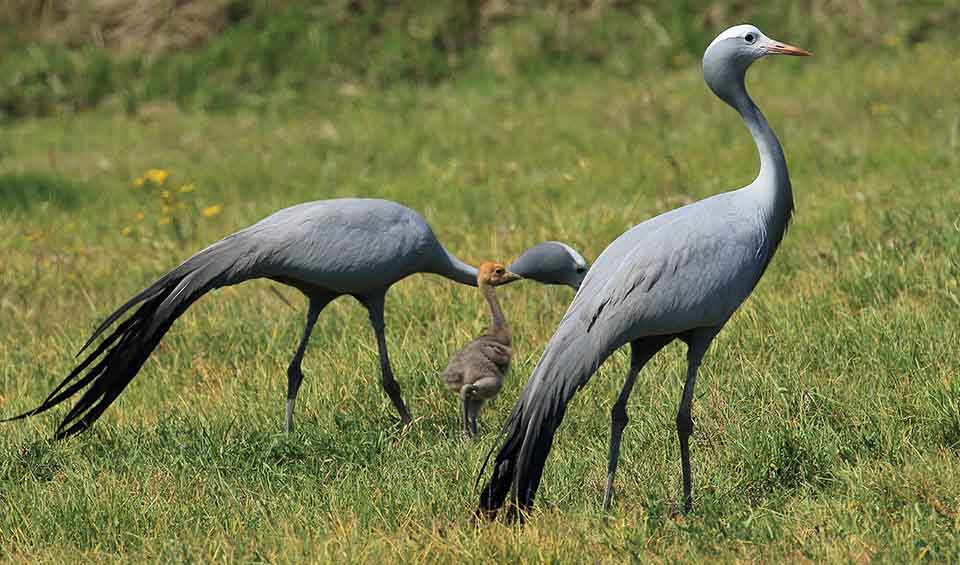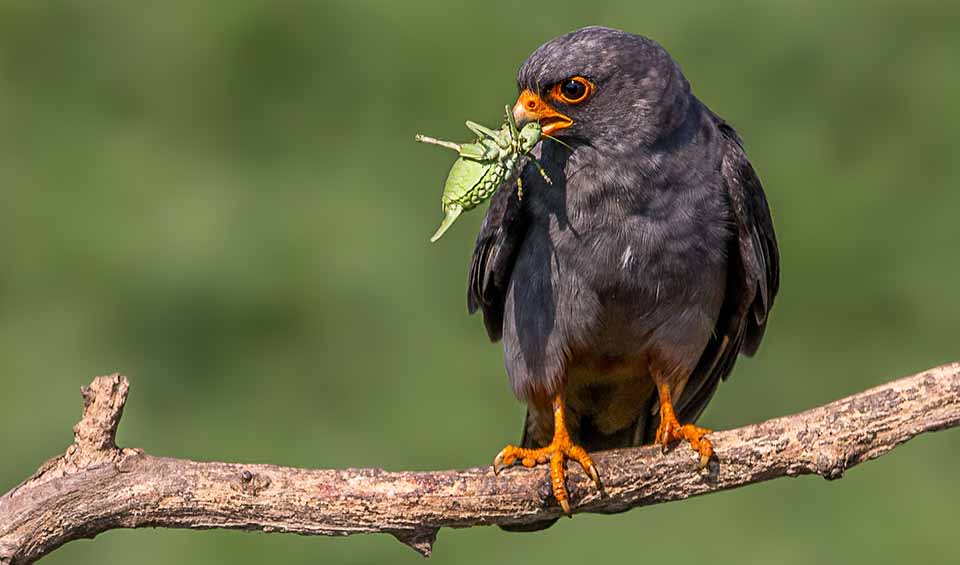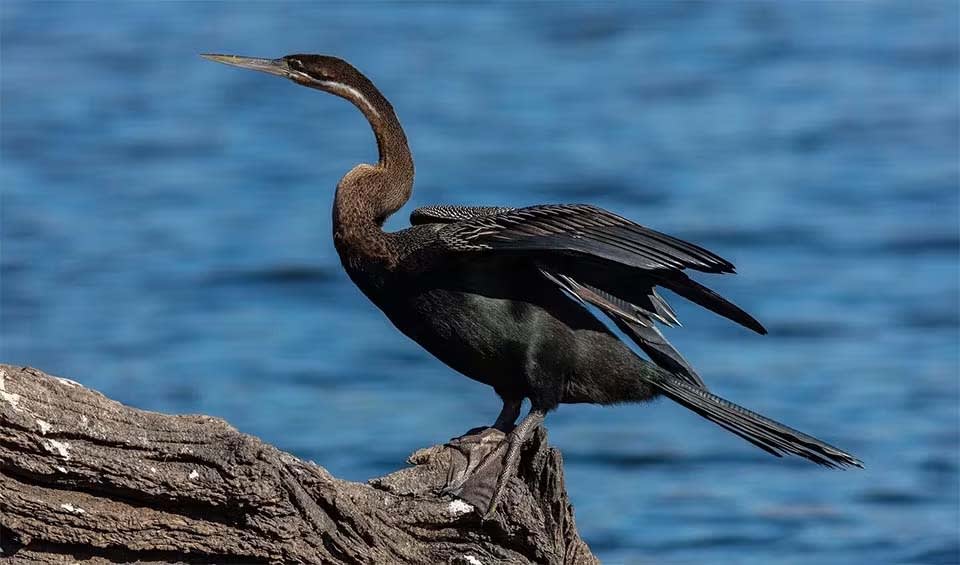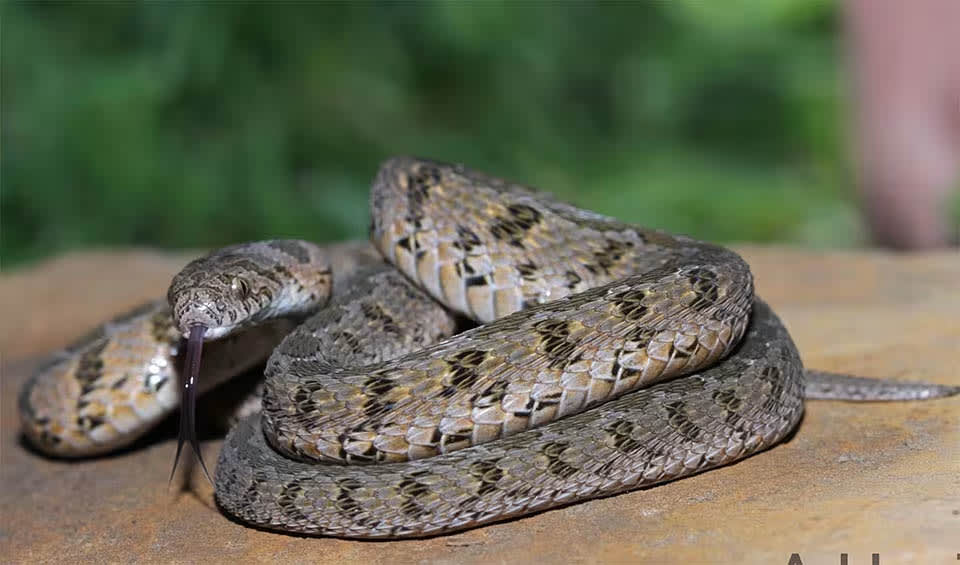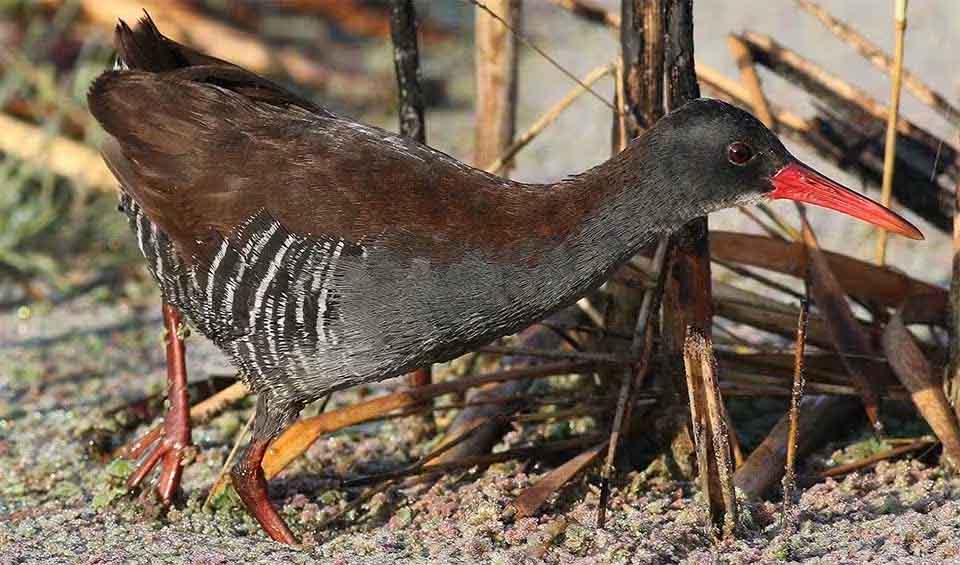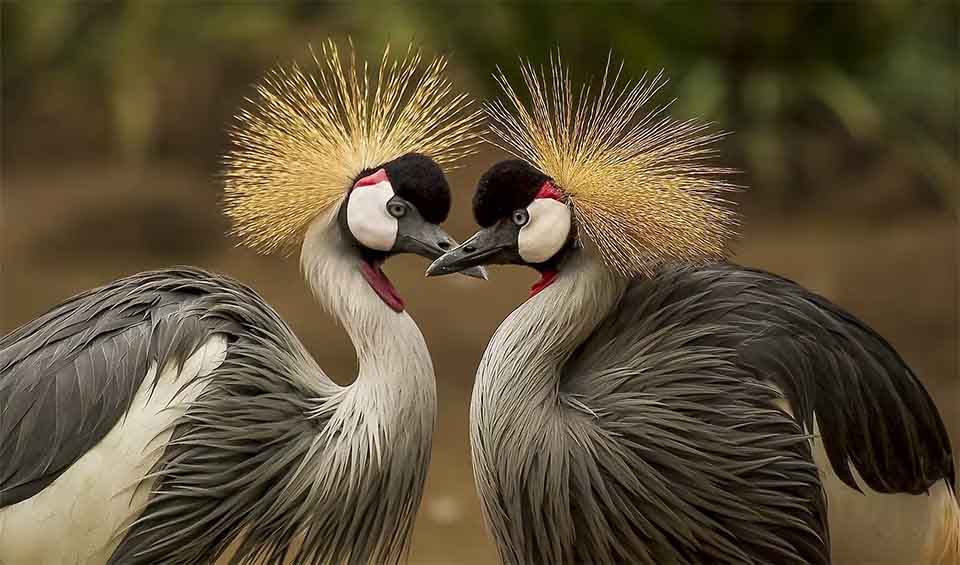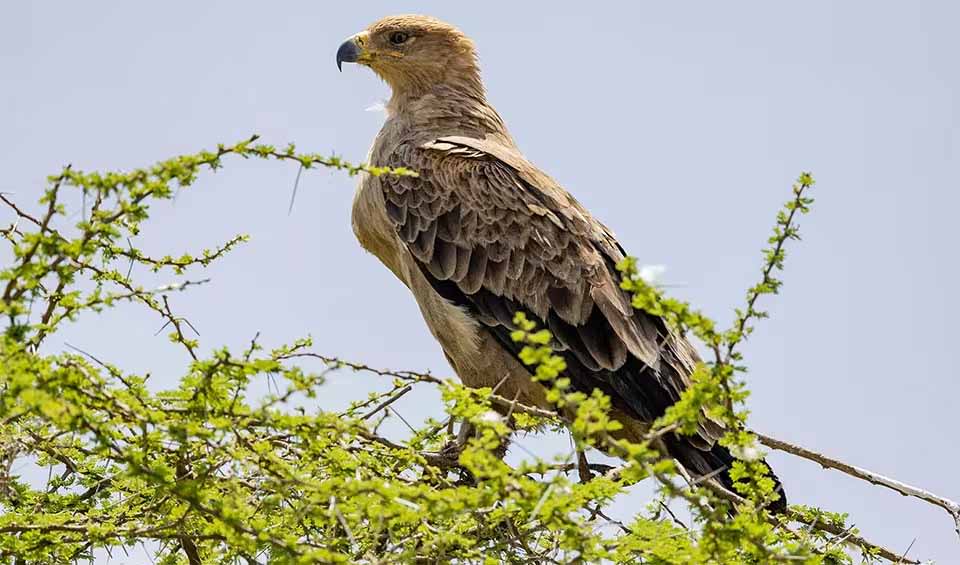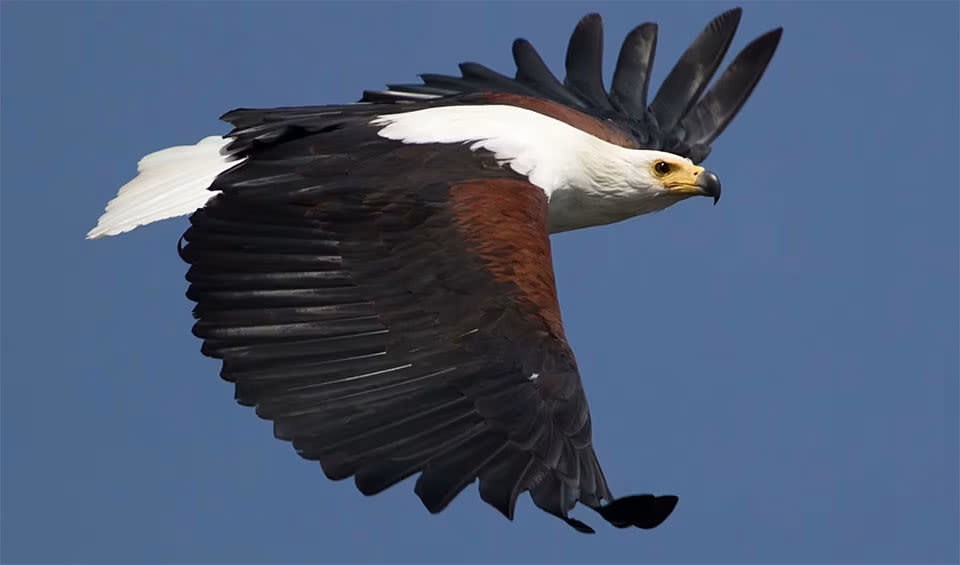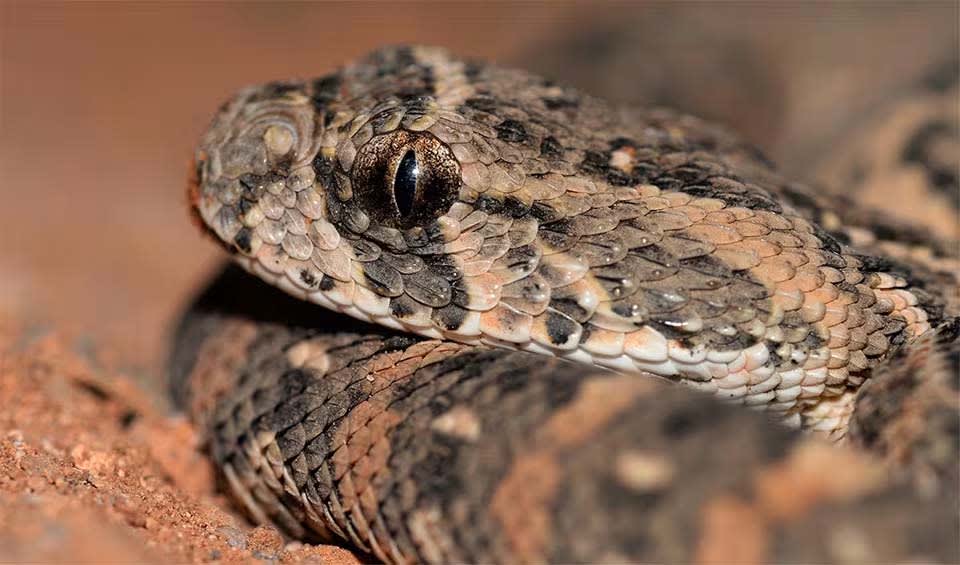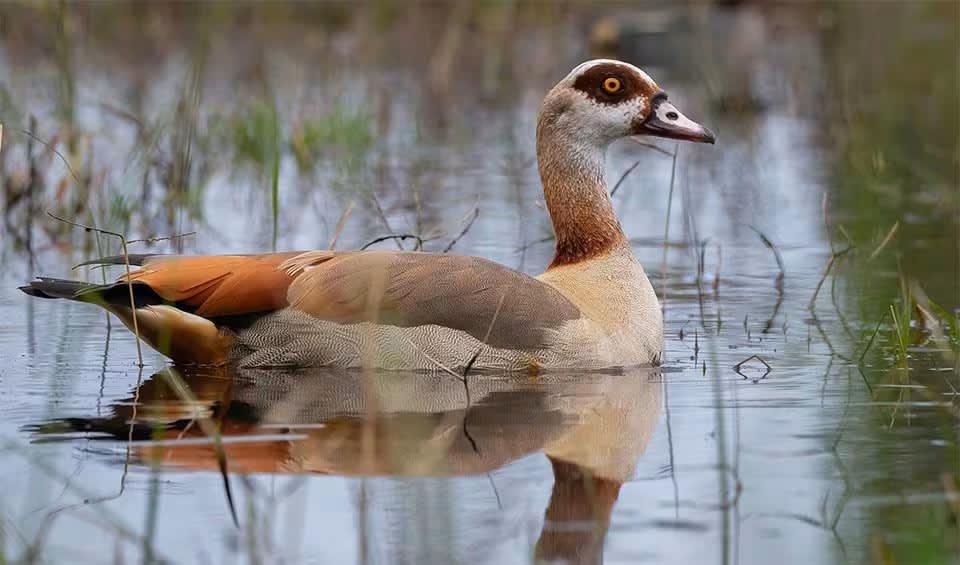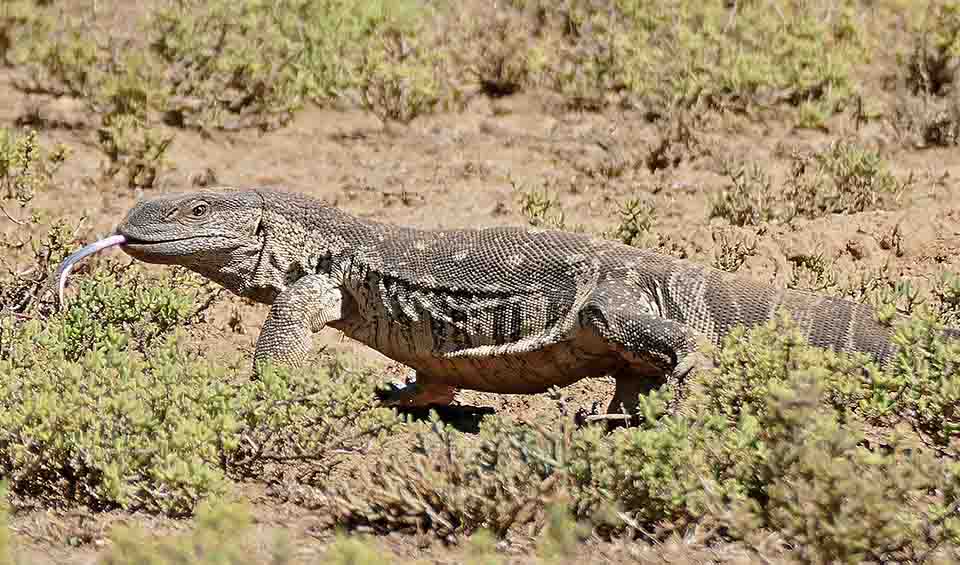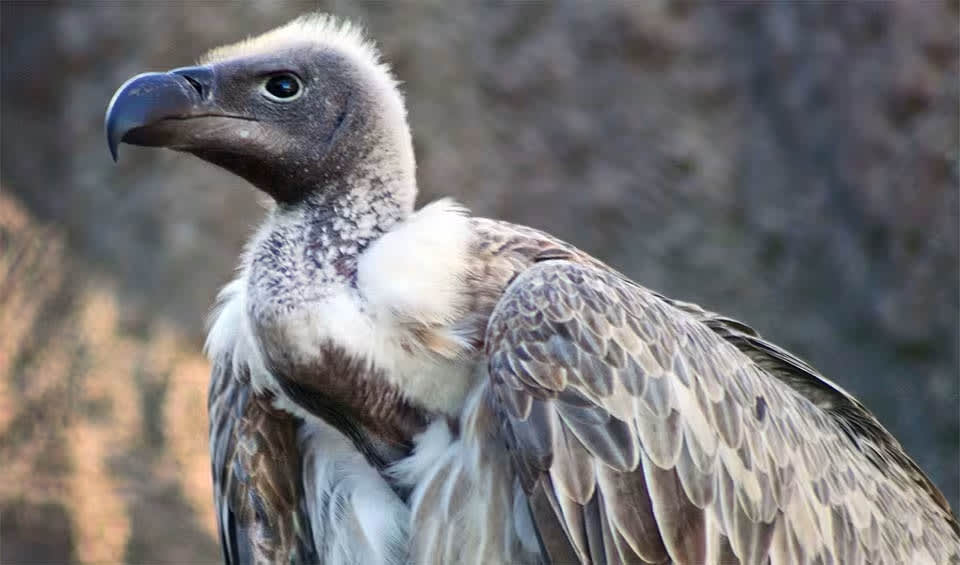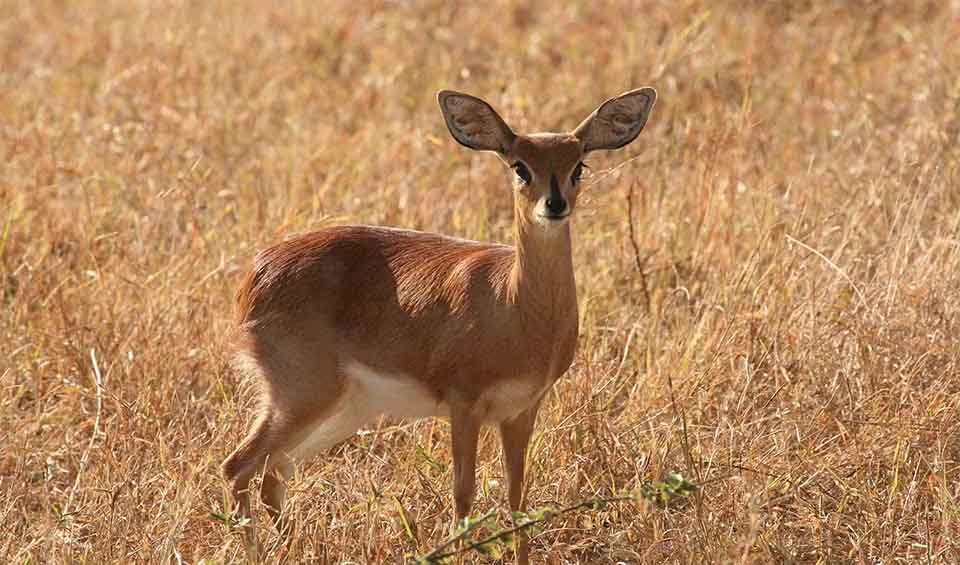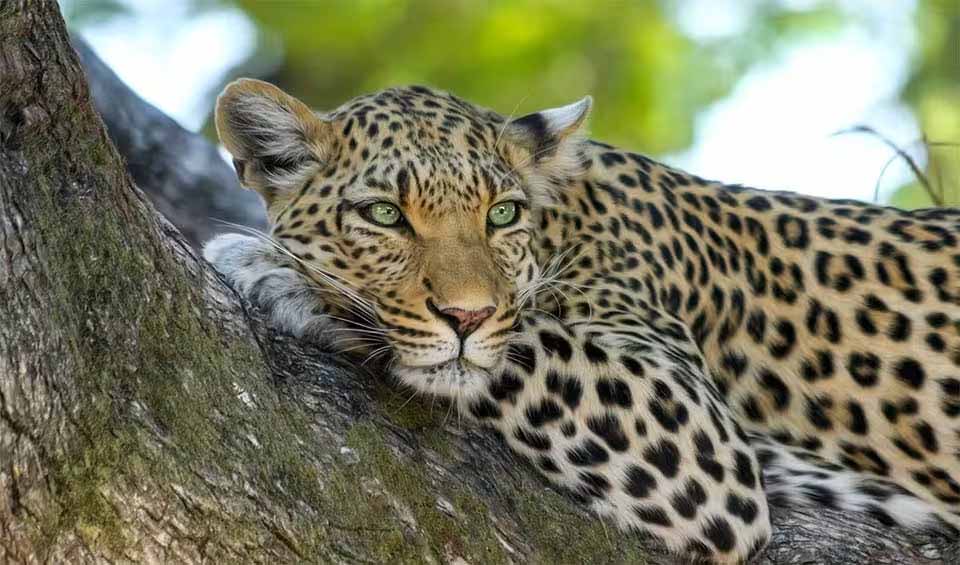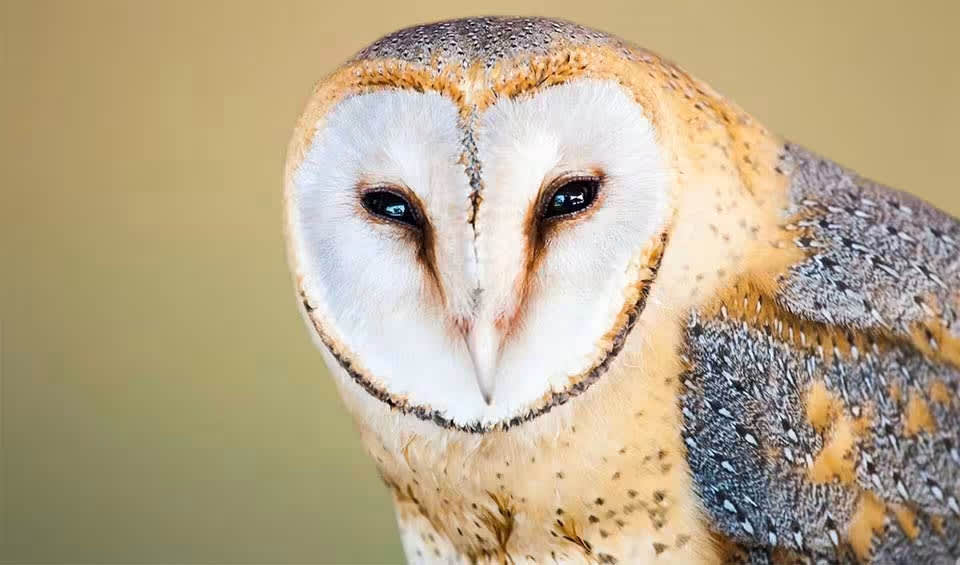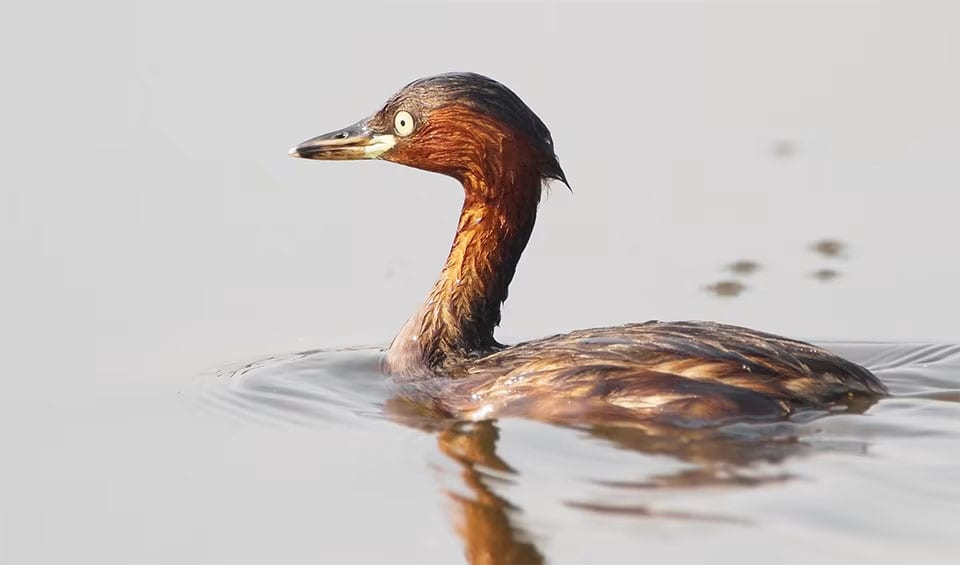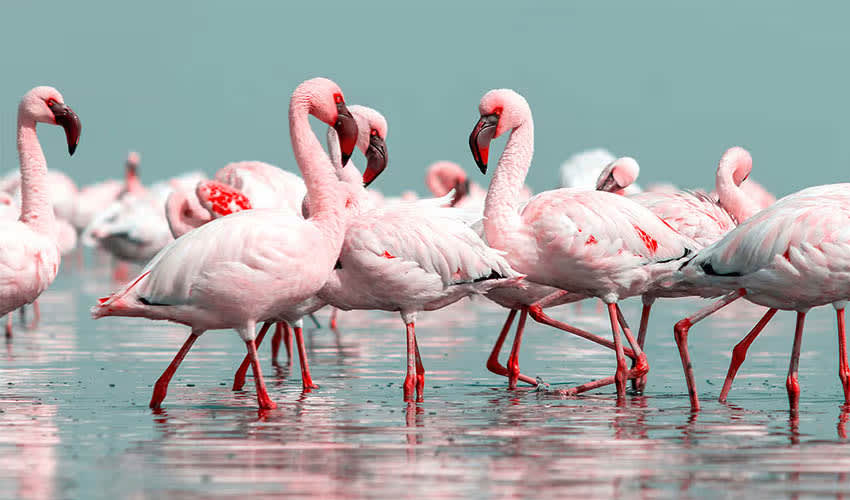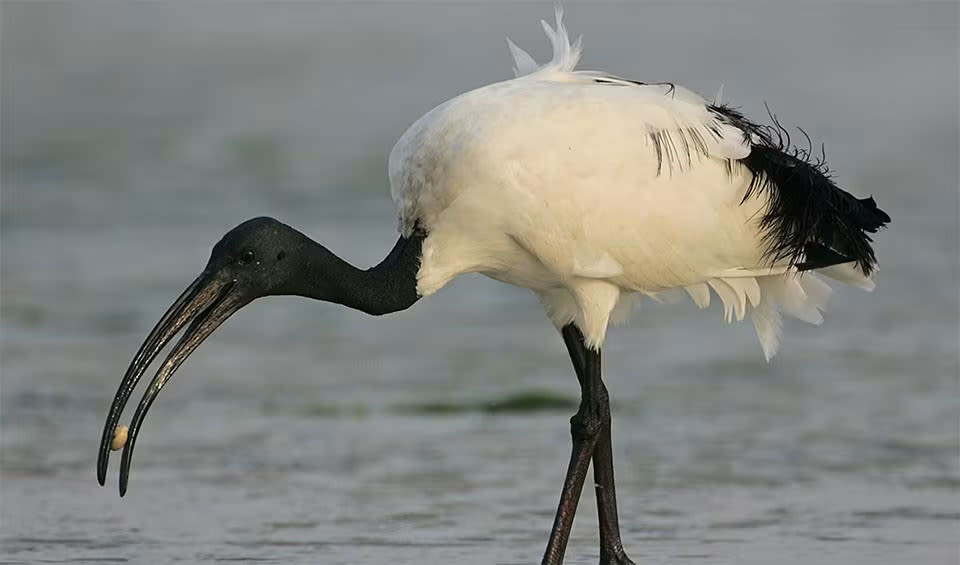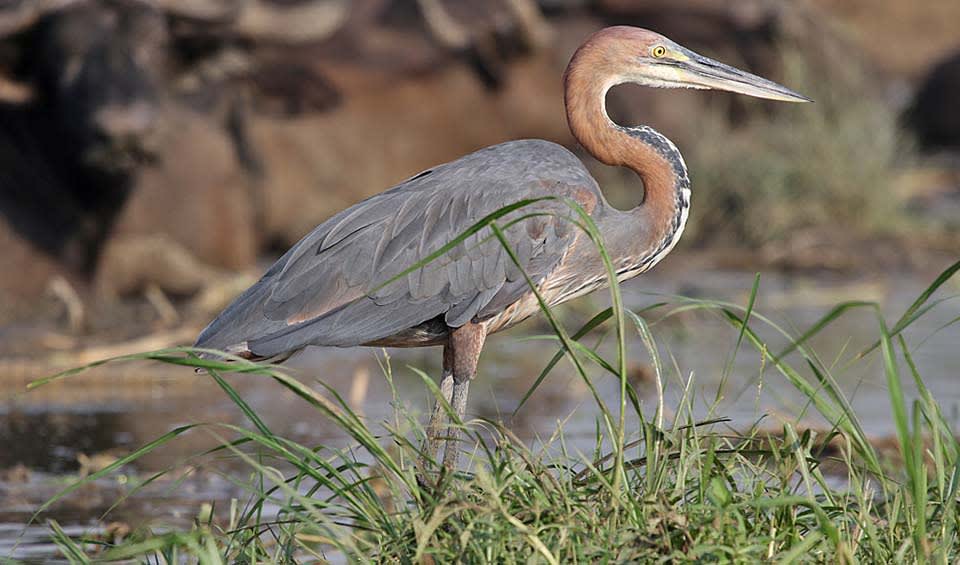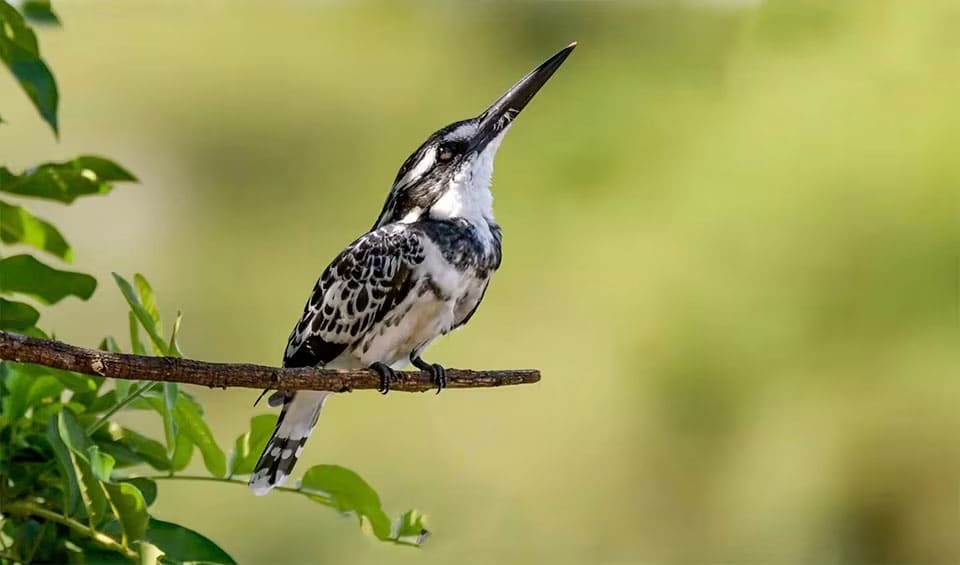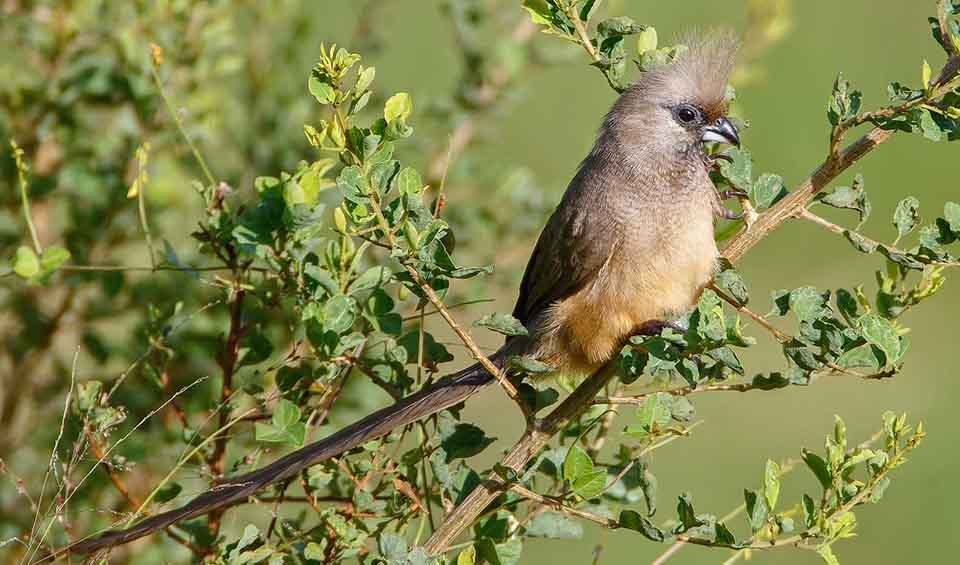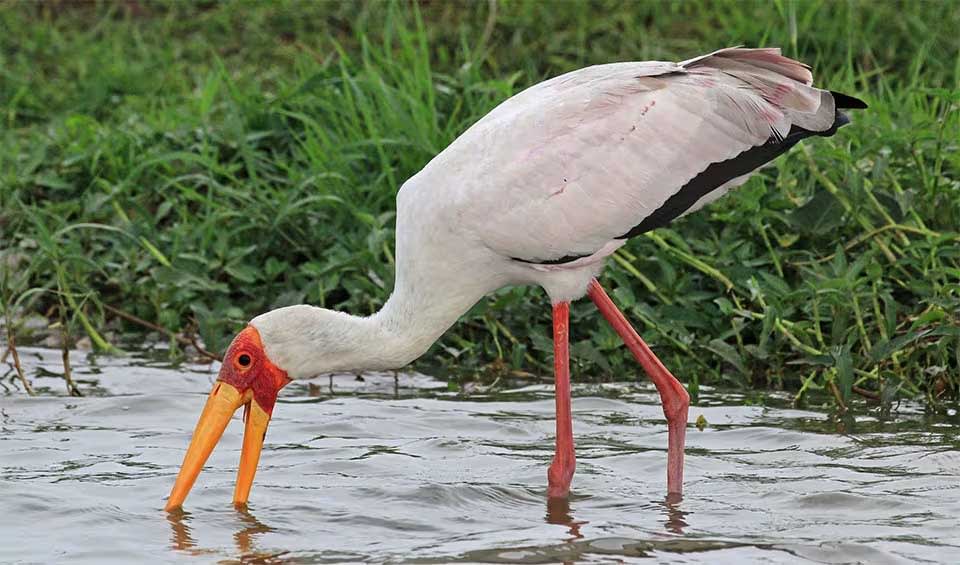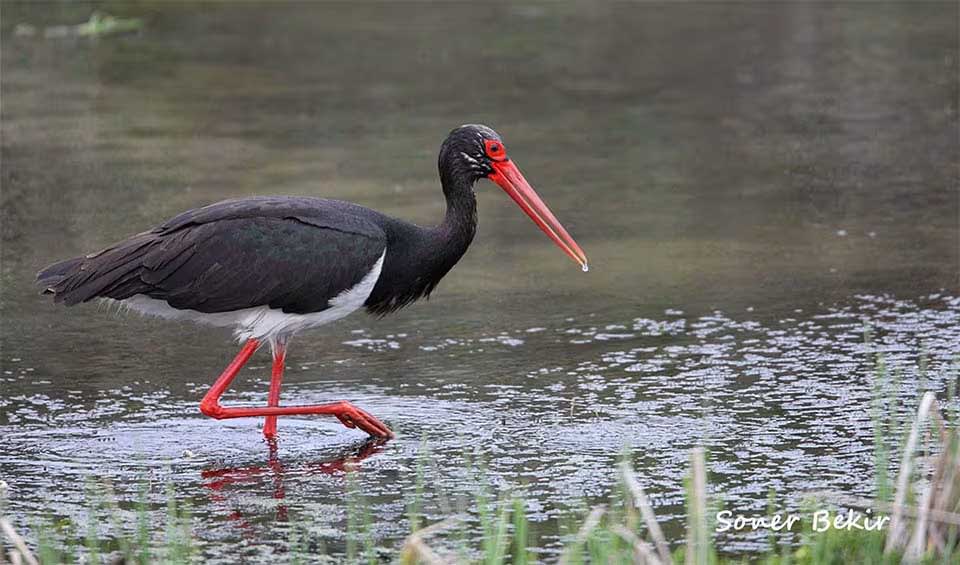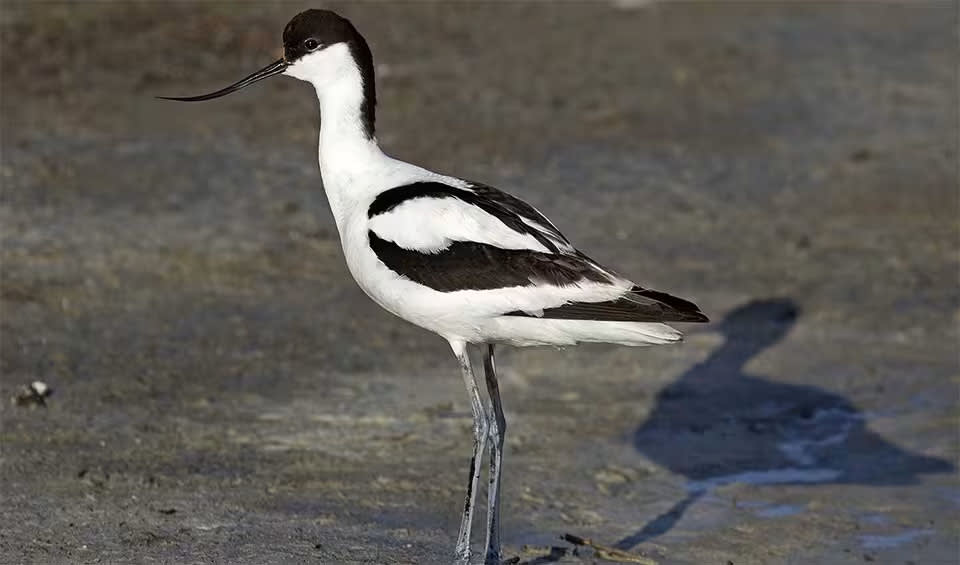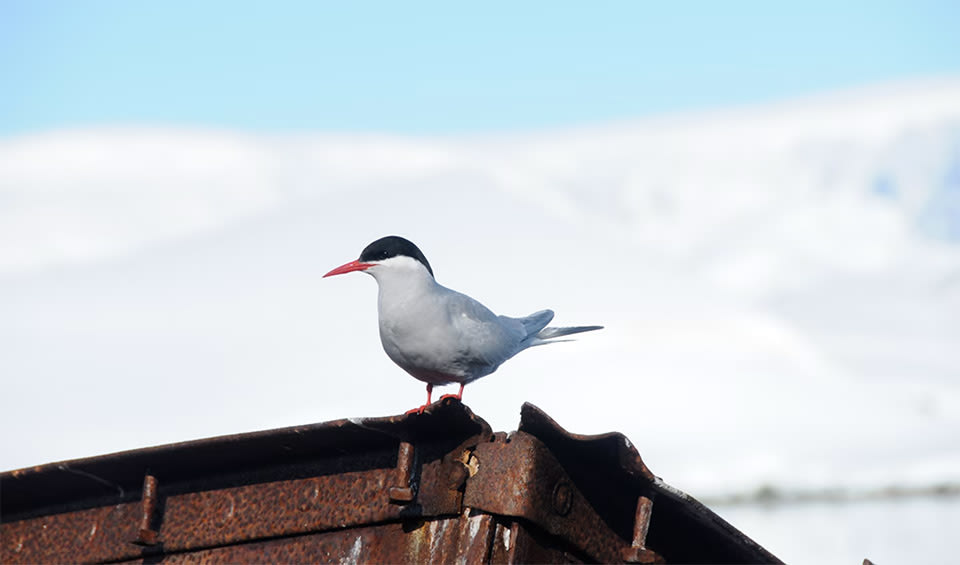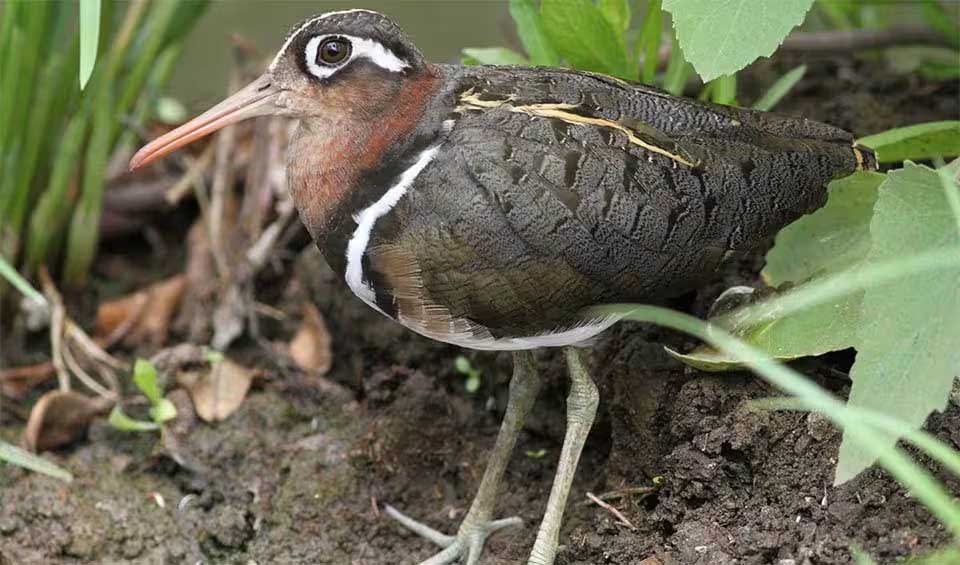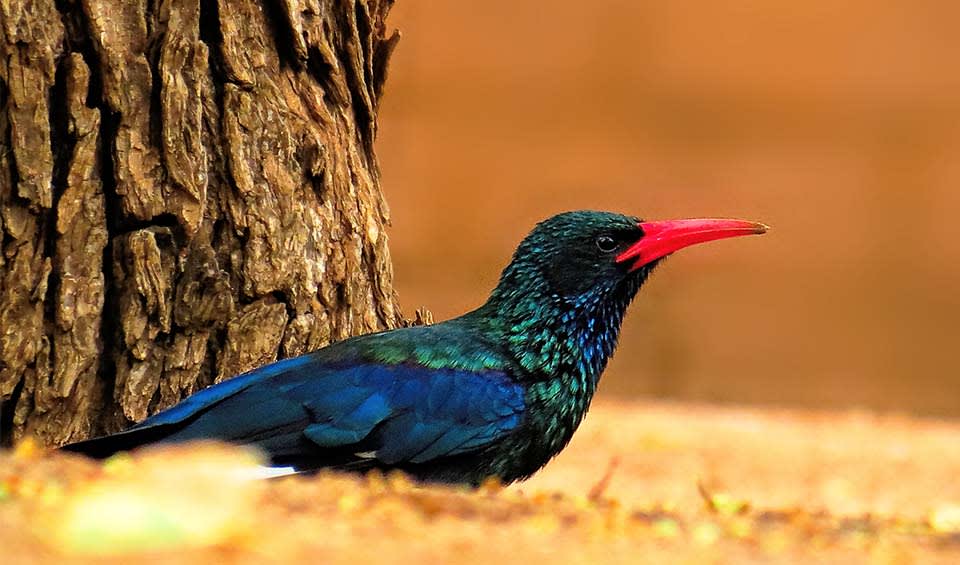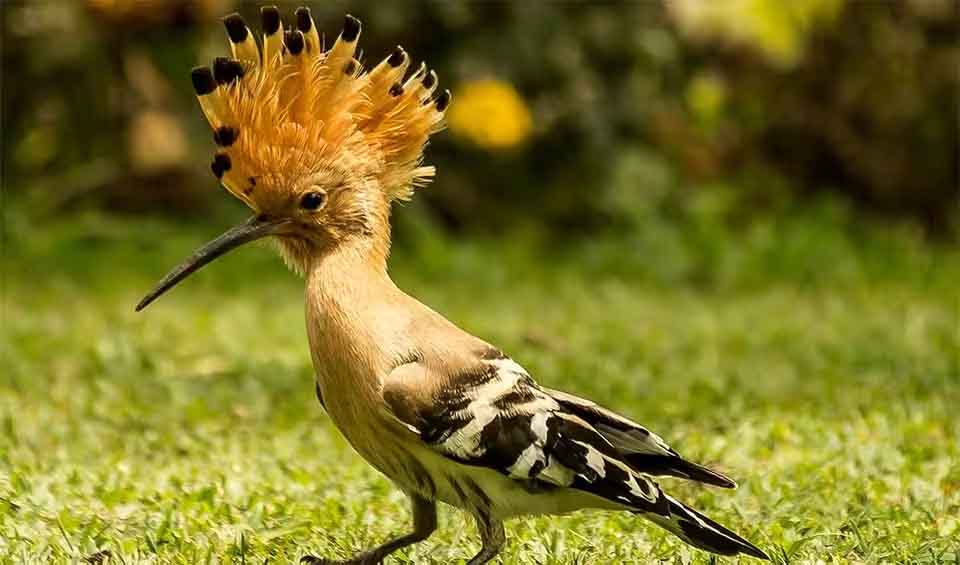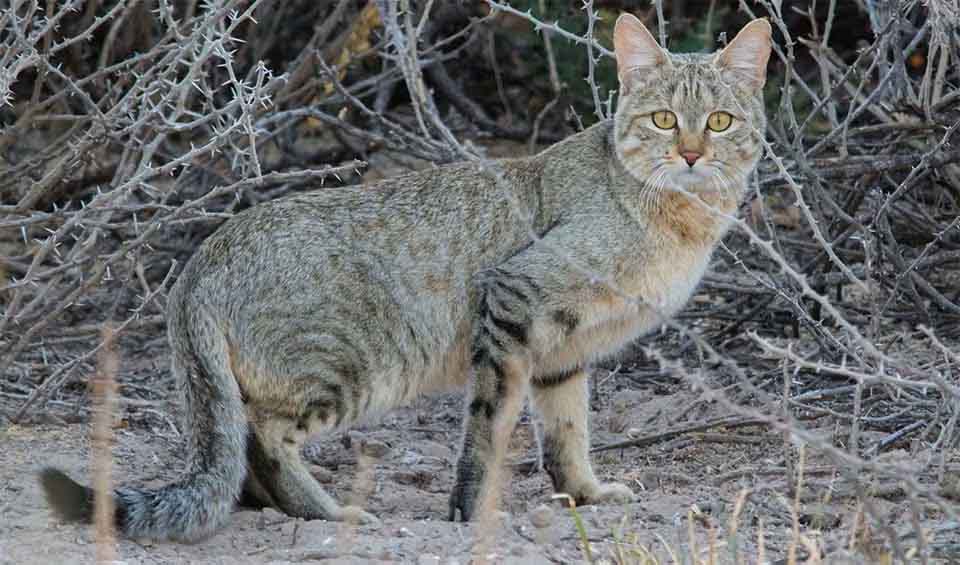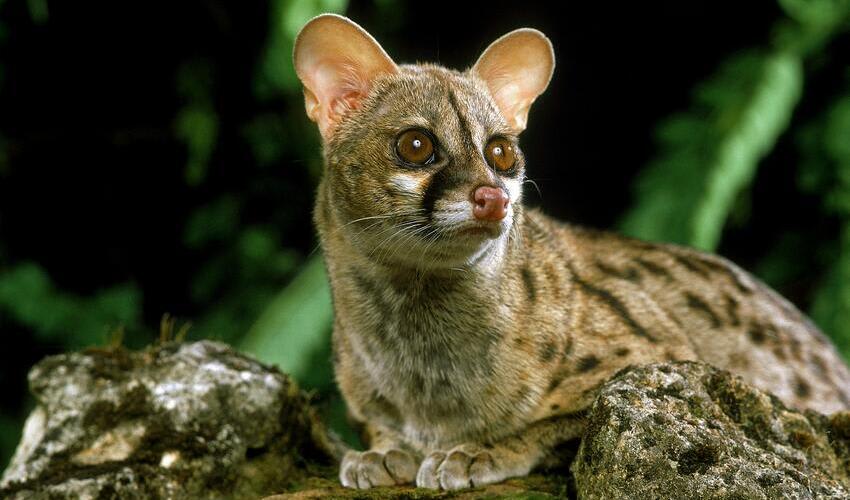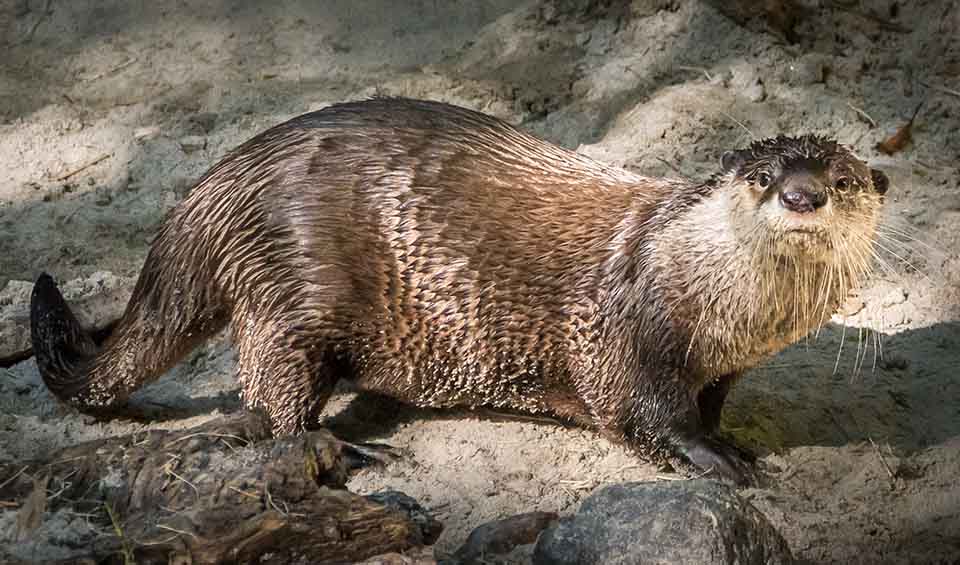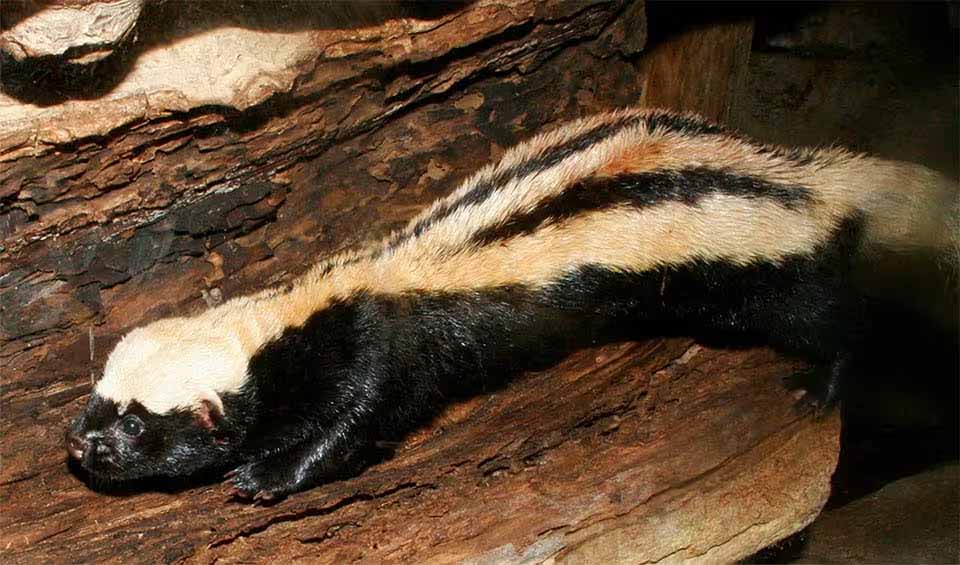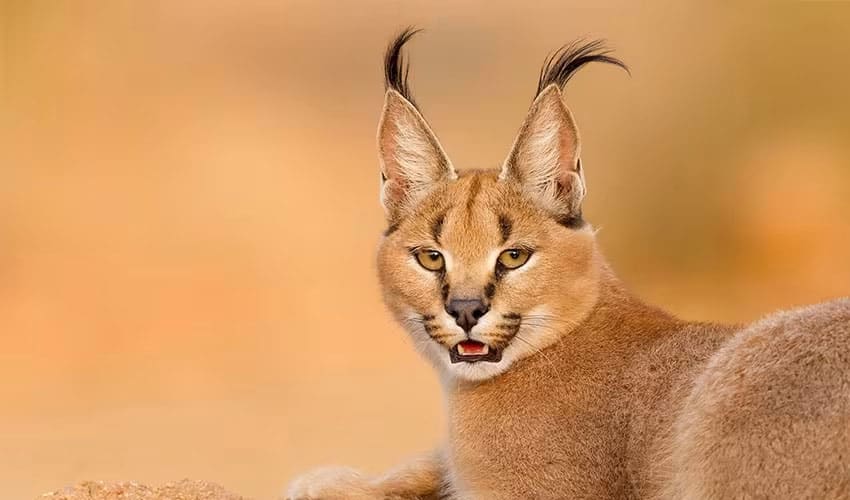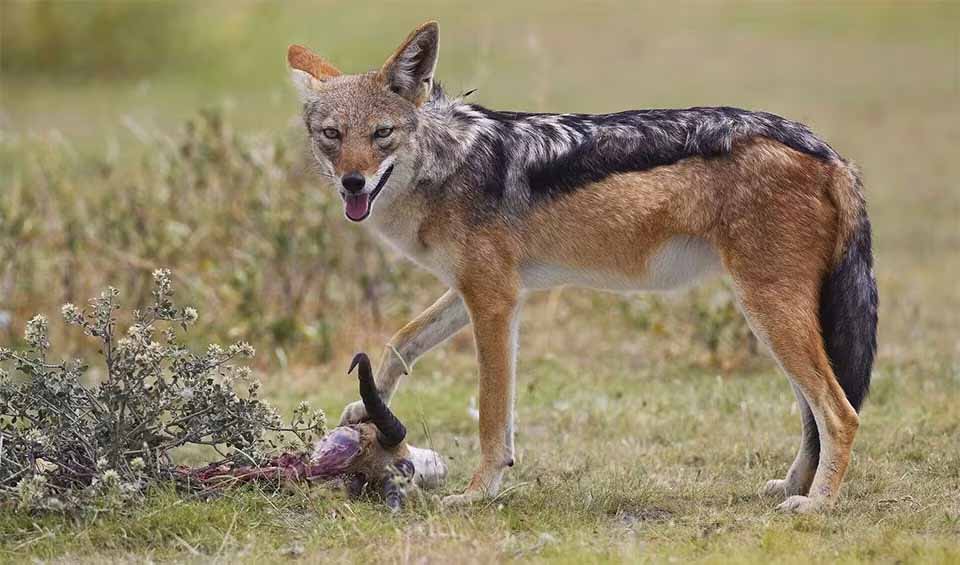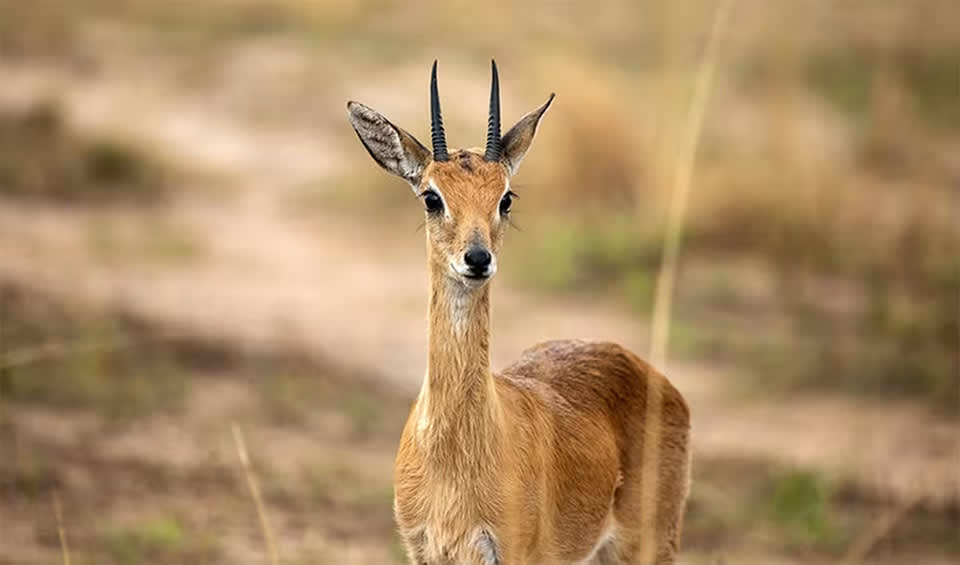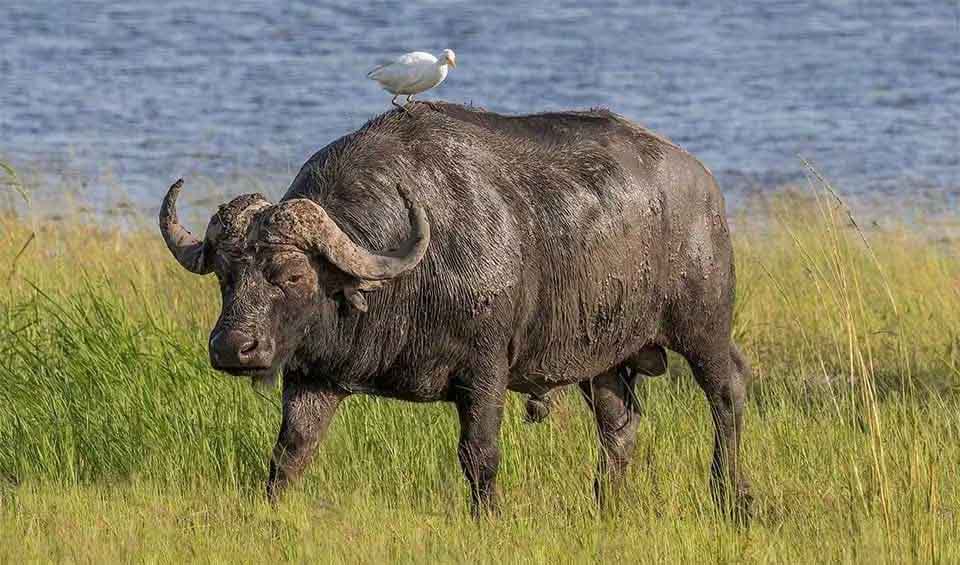Search for Lesotho
Ruff
Looks ordinary—but transforms into one of the most extravagant birds during breeding season
Wattled crane
The “gentle giants” of the wetlands
Rüppells vulture
Once found flying 11,300 meters (37,100 ft) high, sadly, this was more of an accident than a discovery
Reed cormorant
Despite its short stature, it’s a strong and fast flier
Ground agama
Thrives in hot, dry environments like savannas, semi-deserts, and open shrublands
African red toad
Their skin isn’t just pretty — it’s thick and bumpy, helping them retain moisture and deal with harsh, dry environments
Palm-nut vulture
Carrion? Nah, I prefer coconuts
Common duiker
And they live up to the name — these little antelopes are known for diving headfirst into thickets when spooked
African harrier-hawk
Has double-jointed ankles that let it bend its legs backward, forward, and sideways
Yellow mongoose
Looks like a desert-dwelling fox and a meerkat had a sandy little sidekick
Chacma baboon
One of the largest and most widespread baboon species in Africa
Knob-billed duck
Males sport a big, bumpy black “knob” on top of their bill — like a bird-sized bike helmet
Northern black korhaan
Flying? Only when absolutely necessary
Cape ground squirrel
Its tail acts as a personal parasol, shading its body from the intense African sun
Ruddy turnstone
They flip the script — literally!
Klipspringer
Natural-born climber, capable of leaping with incredible agility across steep cliffs and boulder-strewn slopes
African paradise flycatcher
Its call—a soft, sweet “chee-chee” or chattering trill—can often be heard before the bird itself is seen
Cape cobra
Often preyed upon by mongooses, who seem to have no fear of their venom
Little sparrowhawk
The fun-sized falcon of the forest, but with all the attitude of a full-grown eagle
White-necked raven
They are, without a doubt, some of the smartest and most entertaining birds out there!
Pale chanting goshawk
Sing most actively at dawn, often creating a haunting, flute-like melody just as the desert wakes up
Giant kingfisher
Africa’s largest and most powerful kingfisher
Hadada ibis
Natural alarm clocks in African cities — whether you want them or not!
Swainson’s spurfowl
Some of the earliest risers — often calling before sunrise
Black-crowned night heron
One of the most widespread and adaptable herons in the world
White-tailed mongoose
One of its favorite snacks? Beetles and other crunchy bugs!
Cape bushbuck
Females hide their young and eat the feces after nursing them, so no trail of their scents remains to entice predators
Common ringed plover
This bird taps its feet to imitate rain to make the prey reach the surface
Red-capped lark
Surprisingly photogenic, especially when the sun catches their reddish crown just right
Square-tailed nightjar
Their wide, gaping mouths might look a little odd, but they’re perfect for scooping up moths and beetles mid-flight
Blue crane
As South Africa’s national bird, they’re not just a symbol; they’re a living embodiment of the country’s spirit
Red-footed falcon
Their favorite snack? Large insects like locusts and dragonflies
Cape hare
Has large eyes that could cover a field of 360o to survey their surroundings before they take a nap
African darter
African darters or ‘snakebirds’ are expert underwater fishermen equipped with stealth, diving skills, and a spear-like bill
European roller
Loves trees! Only member of its family breeding in Europe
Common egg eater
Has the incredible ability to swallow eggs that are much larger than its own head
White-faced whistling duck
Loud birds with a distinct three-note whistling sound
Bateleur
One of the easiest birds of prey to identify from a distance
African rail
Spend most of their time lurking in the thick reeds and grasses, only venturing out when they absolutely have to
African clawed frog
It’s a frog, but it doesn’t look like the typical frogs we think of!
Barn swallow
Most common and widely distributed swallow globally
Lesser grey shrike
Have been observed remembering the locations of their impaled prey and even using tools to help them catch food
Grey crowned crane
It holds significant cultural and spiritual importance in African cultures, often associated with wisdom, longevity, and good fortune
Tawny eagle
Often seen as a symbol of strength, freedom, and keen vision in many African communities
African fish eagle
With its striking appearance and distinctive call, it is often referred to as the “voice of Africa”
Puff adder
Notoriously grumpy, always putting on a dramatic hissy fit when approached
Guttural toad
Known for its loud, ‘guttural’ croak that can be heard from a distance
Springbok
The national animal of South Africa and even lend their name to a South African rugby team
Little egret
During breeding, they transform with elegant white plumage, adorned by decorative plumes on the head, neck, and back
Egyptian goose
They were commonly depicted in art from ancient Egypt
Eurasian kestrel
Adaptable raptor known for its hovering hunting technique and striking appearance
Nile monitor
Can deliver a painful bite, tail lashes, and fierce scratches — definitely a reptile to respect!
Rock monitor
One of Africa’s largest and most powerful lizards
White-backed vulture
Their highly acidic stomachs and powerful enzymes help break down and neutralize harmful bacteria and toxins present in the carcasses they feed on
Cape vulture
These birds are built for flight; their massive wings allow them to glide effortlessly on thermal currents for hours
Steenbok
A tiny wonder of the animal kingdom that embodies both elegance and resilience
Cape fox
It can climb, swim, and run faster than you might expect from an animal that weighs just a few kilograms
Black-footed cat
When it comes to hunting skills, this cat proves that good things come in small packages
Leopard
Disappearing graceful shadows, this tree-climber is on the way to extinction
Egyptian slit-faced bat
Often called ‘whispering’ bats because their echolocation used to access the area and prey location are low intensity and not strong
Egyptian fruit bat
They hold their food tightly and closely to their bodies while feeding, preventing the food from being stolen by other bats
Great cormorant
Due to their adaptability and willingness to migrate to more favorable habitats, great cormorants are found worldwide
Barn owl
The most cosmopolitan of owls with home ranges extending across the globe
Little grebe
This cute and small bird is one of the most elite hunters below the water’s surface
Greater honeyguide
The master hunter and the bane of the bees
Lesser flamingo
This bird holds a Guinness book of world records to its name
Greater flamingo
The iconic and elegant bird with a curved pink bill is known for turning heads
Hamerkop
The hammerheads of the bird kingdom
African sacred ibis
The fossil records suggest that this species has been on this planet for millions of years
Glossy ibis
These birds seem to have lost their way to the beauty pageant
Goliath heron
This large heron is a firm believer in the adage: “Patience is the key to success”
House sparrow
The most widely dispersed wild bird
Red-billed quelea
The most numerous wild bird species in the world
Helmeted guineafowl
Native to Africa, it is the best-known bird of its family, broadly introduced as domesticated species
Peregrine falcon
At the speed of over 321 km/h (200 mph), this bird outraces a Formula1 car
Pied kingfisher
The only member of the genus having wide distribution across Asia and Africa is sociable, unlike other members of its family
Speckled mousebird
Their dull mousy-brown color justifies the name pretty well
Yellow-billed stork
As the name suggests, this whitish stork has a bright red face and a distinctively long yellow bill
Black stork
The stork with the widest geographic range
White stork
The folktale bird that brings the babies!
Pied avocet
One of the very few birds with an upturned bill
Black-winged stilt
Elegant long-legged wader, common almost worldwide
Arctic tern
This bird can give any cross-country runner a run for their money
Greater painted-snipe
Looks no less than a renaissance masterpiece
Common swift
These enthusiastic travelers can be seen almost worldwide in different seasons
Green wood hoopoe
Insect-eating, tree-dwelling, and an incredible co-partner. That said, there’s nothing uninteresting about this one
Southern ground hornbill
What does a 29 km/h (18 mph) speed coupled with a massive wingspan bring to the table? A ‘vulnerable to extinction’ title isn’t something anybody would hope for
Eurasian hoopoe
Dependable wings and a muscular build. Nope, we aren’t talking about the next Redbull ad campaign
Egyptian vulture
A highly intelligent species that is the world’s only tool-using vulture with a long migratory range
Western marsh harrier
The yellow-eyed devil
Common buzzard
They eat just about everything — rabbits, rodents, birds, carrion, earthworms, insects… even beetles get a look-in
Short-toed snake eagle
A magnificent migratory bird with long, broad wings and a short tail that sings in the form of musical whistles
Bearded vulture
The only living creature that feeds on bone marrow from carcasses in high and inaccessible mountain areas
Osprey
One of only six land-birds with a cosmopolitan distribution habituating all continents except Antarctica
Secretarybird
A long-legged bird with a stunning black feather crest on its back head
Rock hyrax
African rock dwellers that resemble pikas , but are more closely related to elephants!
Aardvark
Dig large subterranean burrows that other animals can hide in during fires, hence preventing wildlife deaths
African wildcat
The direct ancestor of the domestic cat—no wonder why they look so alike!
Plains zebra
These zebras with the underbelly stripes are the longest migrators in Africa
Common (spotted) genet
We can rotate our pinnae by 80 degrees!
Aardwolf
Unlike other hyenas, they do not hunt or scavenge but mainly consume termites
African clawless otter
Inhabits water bodies in sub-Saharan Africa’s savannahs
Striped polecat
They are also called ‘zorilla’ which comes from the Spanish word ‘zorro’, meaning small fox, but they are not fox
African striped weasel
A skunk mimic, besides a similar appearance, also releases smelly fluid from its anal gland when they feel threatened
Serval
Owners of the longest legs-for-body-size of all cats are widespread in sub-Saharan savannahs
Caracal
“To put the cat among the pigeons” was phrased on caracals, as they were once trained for hunting game birds for Persian and Indian royalty
Black-backed jackal
Has two subspecies populations, separated by 900km (560 miles)
Southern reedbuck
Graceful animals with V-shaped horns have royal and aristocratic looks
Oribi
They benefit from wildfires as they can return to the area that recovered from fires to eat fresh grass
African buffalo
They are also known as the “black death” or “widowmaker,” which says a lot about them – dangerous!
Black wildebeest
Smaller and rarer than Blue wildebeest, sometimes sharing the same areas
Hartebeest
They enjoy a sedentary and lazy lifestyle but run fast if they sense danger
Common eland
Large antelopes look like giant cows in appearance but run pretty fast
African helmeted turtle
A freshwater turtle native to the waters of Africa and Madagascar
South African helmeted terrapin
One of Africa’s most widespread and recognizable turtles
